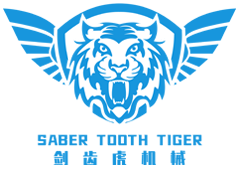-
How to Choose the Right Busbar Cutting Bending Punching Machine for Your Manufacturing Needs
How to Choose the Right Busbar Cutting Bending Punching Machine for Your Manufacturing Needs Table of Contents 1. Introduction to Busbar Processing Machines 2. Understanding Busbar Cutting Bending Punching Machines 3. Key Features to Consider When Choosing a Machine 4. Types of Busbar Cutting Bending Punching Machines 5. Performance Capabilities of Busbar Machines 6. Evalu
How to Choose the Right Busbar Cutting Bending Punching Machine for Your Manufacturing Needs
Table of Contents
- 1. Introduction to Busbar Processing Machines
- 2. Understanding Busbar Cutting Bending Punching Machines
- 3. Key Features to Consider When Choosing a Machine
- 4. Types of Busbar Cutting Bending Punching Machines
- 5. Performance Capabilities of Busbar Machines
- 6. Evaluating Brand Reputation and Customer Reviews
- 7. Budgeting for Your Busbar Processing Needs
- 8. Maintenance and After-Sales Support
- 9. Frequently Asked Questions
- 10. Conclusion
1. Introduction to Busbar Processing Machines
In the manufacturing sector, efficiency and precision are paramount. For industries dealing with electrical systems, **busbar cutting, bending, and punching machines** play a critical role. These machines streamline the production process of busbars, ensuring they meet the required specifications for electrical distribution. Understanding how to choose the right equipment can significantly enhance operational efficiency and product quality.
2. Understanding Busbar Cutting Bending Punching Machines
Busbar cutting bending punching machines are essential tools for fabricating electrical busbars, which are critical for power distribution. These machines perform three primary functions:
- **Cutting:** The ability to cut busbars to precise lengths.
- **Bending:** Shaping the busbars to specific angles and configurations.
- **Punching:** Creating holes or slots for connecting busbars to other electrical components.
The right machine can dramatically reduce production time while maintaining high-quality standards.
3. Key Features to Consider When Choosing a Machine
When selecting a busbar cutting bending punching machine, certain features can greatly impact your manufacturing process. Here are some critical considerations:
3.1 Size and Capacity
Evaluate the maximum size and thickness of busbars your machine can handle. Consider your production volumes and the dimensions of the busbars commonly used in your projects. Machines with larger capacities may provide more versatility.
3.2 Automation
Automated machines can significantly improve throughput and reduce human error. Look for options with programmable settings to ensure consistent performance and easy operation.
3.3 Precision and Tolerance
Precision is crucial in electrical applications. Ensure that the machine offers high tolerance levels to produce parts that meet exact specifications.
3.4 Power Requirements
Assess the power requirements of the machines. Depending on your facility's infrastructure, you may need a machine compatible with your existing power supply.
4. Types of Busbar Cutting Bending Punching Machines
Various types of busbar processing machines cater to different manufacturing needs. Understanding the options available can help refine your selection.
4.1 Manual Machines
Manual machines are suitable for smaller operations or low-volume production. They require more labor but are often more affordable.
4.2 Semi-Automatic Machines
These machines offer a balance of manual operation and automation, improving efficiency while remaining cost-effective.
4.3 Fully Automatic Machines
Ideal for large-scale manufacturing, fully automatic machines handle all processing tasks with minimal human intervention, maximizing productivity.
5. Performance Capabilities of Busbar Machines
Understanding the performance capabilities of busbar machines is vital for ensuring they meet your manufacturing needs. Consider the following aspects:
5.1 Speed and Efficiency
Look for machines that provide high processing speeds without sacrificing quality. Efficiency is key to maintaining competitive production timelines.
5.2 Flexibility
Evaluate whether the machine can adapt to various busbar types and sizes. A flexible machine can help diversify your product offerings.
5.3 Durability
Investing in a durable machine can save costs in the long run. Assess the materials used in construction and the overall robustness of the equipment.
6. Evaluating Brand Reputation and Customer Reviews
Brand reputation plays a crucial role in your decision-making process. Researching manufacturers and reading customer reviews can provide insights into reliability and performance.
6.1 Researching Manufacturers
Look for established companies with a proven track record in the industry. A reputable manufacturer is more likely to offer quality products and reliable customer service.
6.2 Reading Customer Feedback
Customer reviews can provide real-world insights into machine performance and potential issues. Pay attention to feedback regarding durability, ease of use, and customer support.
7. Budgeting for Your Busbar Processing Needs
Determining your budget is a critical step in the selection process. Analyze the costs involved, including:
7.1 Initial Purchase Price
Consider the upfront cost of the machine and whether it fits within your budget constraints.
7.2 Operating Costs
Evaluate ongoing operational expenses, including maintenance, power consumption, and potential downtime.
7.3 Return on Investment (ROI)
Calculate the expected ROI based on increased efficiency and reduced labor costs. A machine with a longer life expectancy and fewer issues may provide a better return.
8. Maintenance and After-Sales Support
Reliable maintenance and support are crucial for the longevity of your machine. Consider the following:
8.1 Maintenance Requirements
Assess the maintenance needs of the machine and whether your team can handle them or if external support is required.
8.2 Warranty and Support Options
Check the warranty terms and what support options are available to address potential issues. A solid after-sales support system can save time and costs.
9. Frequently Asked Questions
9.1 What is a busbar cutting bending punching machine?
A busbar cutting bending punching machine is a specialized equipment that automates the processes of cutting, bending, and punching busbars for electrical distribution.
9.2 How do I determine the right size machine for my needs?
Evaluate the maximum dimensions and thicknesses of the busbars you work with and choose a machine that comfortably accommodates those specifications.
9.3 Are automatic machines worth the investment?
Fully automatic machines typically offer higher efficiency and lower labor costs, making them a worthwhile investment for larger production facilities.
9.4 What maintenance does a busbar machine require?
Regular cleaning, lubrication, and inspection of key components are essential to ensure optimal performance and longevity.
9.5 How can I improve the efficiency of my manufacturing process?
Investing in high-quality machinery, training staff, and streamlining workflow processes can all contribute to improved efficiency.
10. Conclusion
Selecting the right busbar cutting bending punching machine is vital for enhancing your manufacturing capabilities and ensuring product quality. By understanding the features, types, and performance capabilities, evaluating brand reputation, and considering budget and maintenance, you can make an informed choice that meets your operational needs. Investing time in this decision will undoubtedly pay off in increased efficiency and profitability, allowing your business to thrive in a competitive market.
Related news




